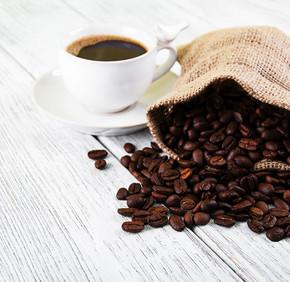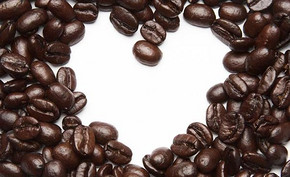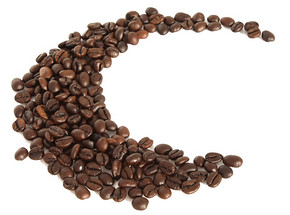Burundi coffee detailed explanation and future development
Follow the caf é (Wechat official account vdailycom) and found that Beautiful Cafe opened a small shop of its own.
Burundian Coffee Overview:
Coffee species and varieties: 96% Arabica species, mostly Jackson bourbon and Mibilisi.
Taste spectrum: mellow, sweet and bright, moderate sweetness.
The name of the main producing area: cloth factor, Erimiros, Namirva.
Altitude: 1000-2000 m
Manor size: the average manor area is less than one hectare
Flowering season: September to November every year
Harvest season: February to June every year
Export season: September of each year to May of the following year
Treatment methods: complete washing method and washing method
Main purchasing countries: Germany, Belgium, United States, Japan, Australia, Switzerland.

Burundian coffee explains in detail:
There are many coffee star producing areas around Burundi, such as Rwanda, Tanzania and so on. Coffee cultivation and export are the main pillars of the country's economy, and the coffee planting industry is regarded as a boutique industry. Years of war have forced many coffee farmers to move to Tanzania, coupled with the prevalence of AIDS and frequent natural disasters, so the country's coffee production is very small. "quantity" is inversely proportional to "quality", so the "quality" of Burundian coffee is recognized as high.
Burundi ranks first in poverty in the world and receives humanitarian assistance from various countries every year. However, as a result of frequent civil wars, in 1996 all countries began to end their humanitarian assistance and instead began economic sanctions. It was not until 1999 that the situation improved. With the fall of government, genocide, economic malaise and cannibalism everywhere, it is strange that the coffee industry can survive and be refined in such a bad country. The main reason is that the quality of coffee cultivation is really too important to every family in the country, because they almost live on coffee, because the output is low, so the quality must be high in order to get a good price.
Belgium invaded Burundi as early as 1904, bringing coffee to this poor country. At present, most of them are Arabica species, and the proportion of Luodou is very small. The coffee tree branch grows coffee on hills 1000-2000 meters above sea level, and 800000 farmers grow coffee in 60, 000 hectares of coffee-growing areas. Local coffee farmers cannot afford to buy chemical fertilizers because they live in poverty, so they have no choice but to cultivate coffee with organic fertilizers. Therefore, coffee in Burundi is all organic coffee "Organic Coffee", so that insect pests are very serious, resulting in very little production.
Coffee in Burundi is basically completely washed or washed. Coffee farmers transport the harvested coffee berries to a designated treatment plant for wet treatment. After the wet treatment and fermentation process is completed, the coffee beans are transported to a fixed-point treatment plant for classification. After that, it is stored in a large warehouse. Exports can reach all parts of the world by sea, land and air.
The future:
Burundians know how to find the right target for their coffee, because they know that less quantity means higher quality, so the price certainly needs to be much higher. And local coffee farmers began to set up organizations to communicate with each other and share coffee planting experience and technology. Like Jack Ma, instead of listening to the government or economists, they listen to consumers' comments on their coffee in order to improve their growing skills.
By the time you read this article, the coffee berry processing plant in Burundi has completely changed from nationalization to privatization, which shows that the quality of coffee in Burundi is really one of the best. The flavor spectrum of high-quality Burundian coffee is very rich, medium-roasted Burundian coffee beans and wild and fruity, but without losing the strong aroma and sweetness of the coffee.
We have only one wish: to get this country out of civil war and clan massacres as soon as possible, so that Burundian coffee production can catch up.
Burundi, officially known as the Republic of Burundi (bu Republic of Burundi undi), is a small landlocked country located in East Africa, surrounded by Rwanda, Tanzania and the Democratic Republic of the Congo to the north, east and west, respectively, and more than half of its border with the Democratic Republic of the Congo lies on the famous Lake Lake Tanganyika.
Burundi is one of the poorest countries in the world and its gross domestic product is lower than that of other countries. The main reasons for this situation are civil war, corruption and the low level of education of the people, as well as the prevalence of AIDS. Coffee is the main export industry, and it has been recognized as "coffee boutique country" by coffee lovers all over the world.
Polondi is a landlocked country, located in the Great Rift Valley of East Africa, with complex topography. The steep ridge on the east bank of Lake Tanganyika is a watershed between the Nile River system and the Congo River system of Africa's two major rivers, known as the "Heart of Africa". The country covers a total area of 27830 square kilometers. The population is 8 million.
Location: Polon is a landlocked country south of the equator in East Africa, with triangular borders, Tanzania to the east, the Democratic Republic of the Congo to the west, and Luanda to the north, a watershed between the Congo River and the Nile River.
Topography: most of the country is a plateau with an elevation of more than 1500 meters above sea level. At the junction of the west and Luanda, the mountains are towering, with the highest peak reaching 2760 meters, high in the west and low in the east, and more than 1300 meters high in Tanzania. The west plummets to Tanzania to the west branch of the East African Rift Valley.
Climate: the savanna climate is dominant, with an annual precipitation of 1200mm to 1600mm. It is divided into two seasons: rainy season and dry season. The two rainy seasons are from February to May and from September to November respectively; the rest are dry seasons.
Although it is located at the equator, the climate is regulated by the height of the terrain. There is abundant rainfall in the territory, and because the water conservancy has not been repaired, it often causes serious flooding and disasters, and raises the water level of Lake Tanganyika, resulting in serious losses to the industrial areas, urban areas and part of the roadbed along the ports of the lake area. sometimes it's completely destroyed.
Important Notice :
前街咖啡 FrontStreet Coffee has moved to new addredd:
FrontStreet Coffee Address: 315,Donghua East Road,GuangZhou
Tel:020 38364473
- Prev

Is coffee the ultimate answer to extreme poverty in Burundi?
Following Cafe (official Wechat account vdailycom) found that Coffee Cafe opened a small shop of its own to challenge coffee production. Coffee as a crop was introduced into the colony of Burundi in the 1930s. Since then, the question of whether coffee cultivation should be publicly owned or privately recognized by the government has been wavering. During this period, decades of civil war has seriously hindered coffee cultivation.
- Next

Island Coffee: a brief introduction to the Historical Development of planting in Puerto Rico
Following Cafe Review (Wechat official account vdailycom) found that Beautiful Cafe opened a small shop in Puerto Rico, an unincorporated territory of the United States, which is rarely heard of, and most people will probably know that it is a tourist destination rich in Miss World. As one of the few island countries in the Caribbean, a country called a wealth port by the Spaniards, it was discovered in Columbus.
Related
- Detailed explanation of Jadeite planting Land in Panamanian Jadeite Manor introduction to the grading system of Jadeite competitive bidding, Red bid, Green bid and Rose Summer
- Story of Coffee planting in Brenka region of Costa Rica Stonehenge Manor anaerobic heavy honey treatment of flavor mouth
- What's on the barrel of Blue Mountain Coffee beans?
- Can American coffee also pull flowers? How to use hot American style to pull out a good-looking pattern?
- Can you make a cold extract with coffee beans? What is the right proportion for cold-extracted coffee formula?
- Indonesian PWN Gold Mandrine Coffee Origin Features Flavor How to Chong? Mandolin coffee is American.
- A brief introduction to the flavor characteristics of Brazilian yellow bourbon coffee beans
- What is the effect of different water quality on the flavor of cold-extracted coffee? What kind of water is best for brewing coffee?
- Why do you think of Rose Summer whenever you mention Panamanian coffee?
- Introduction to the characteristics of authentic blue mountain coffee bean producing areas? What is the CIB Coffee Authority in Jamaica?

